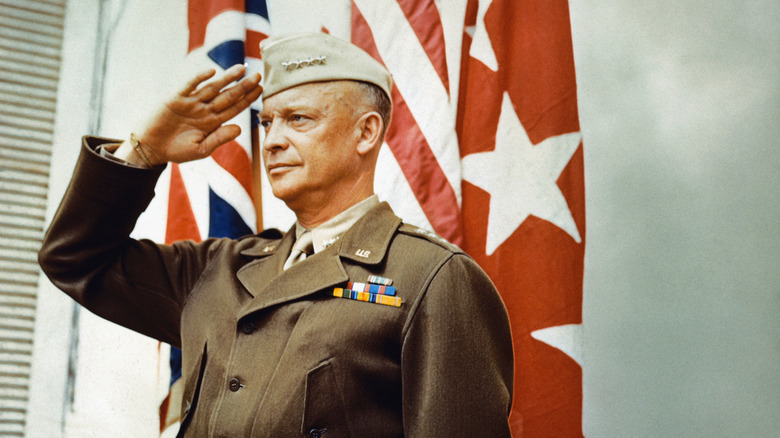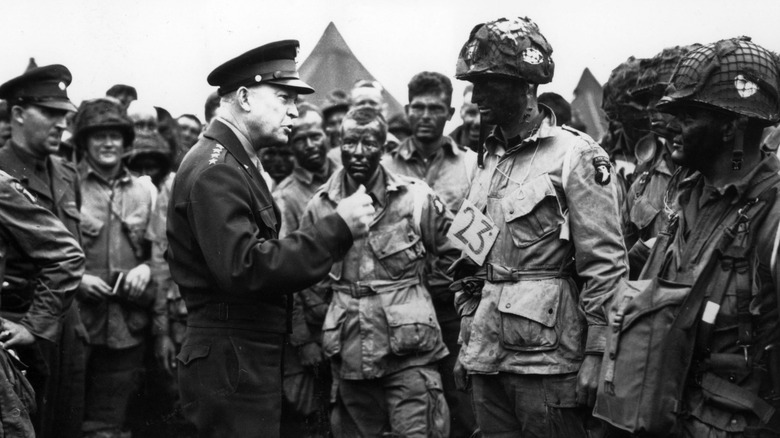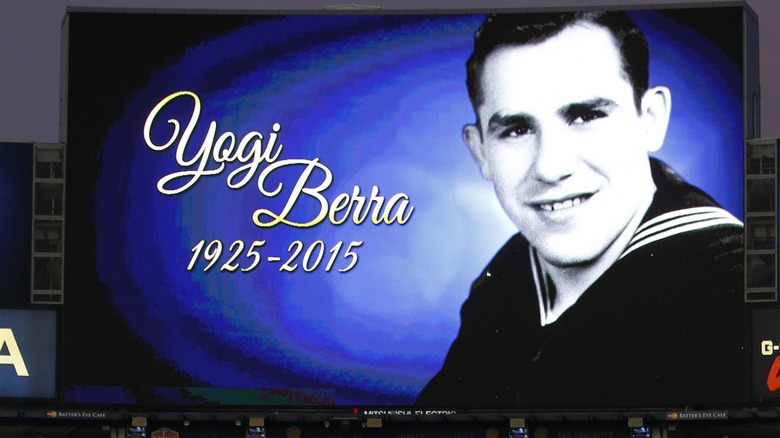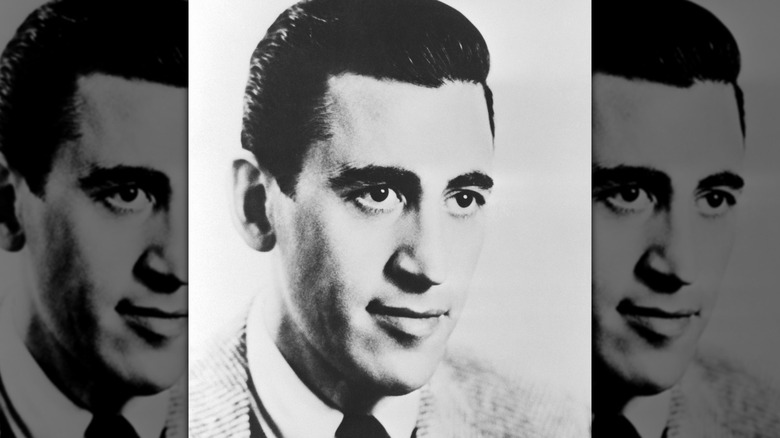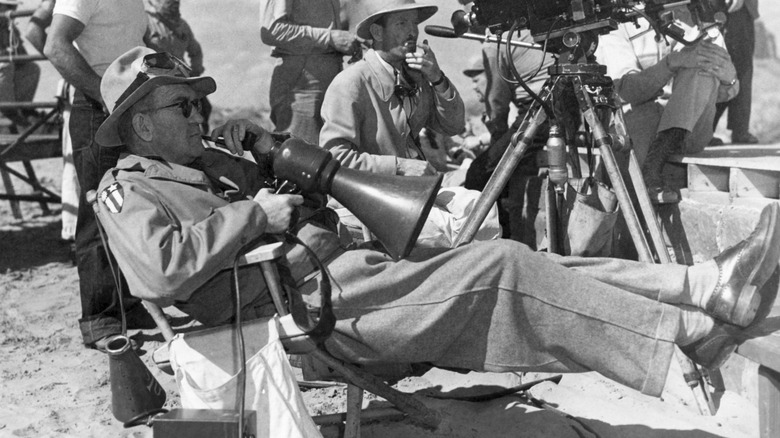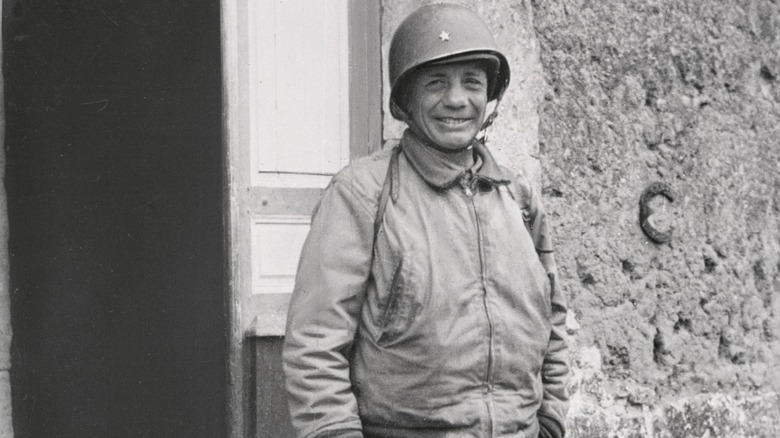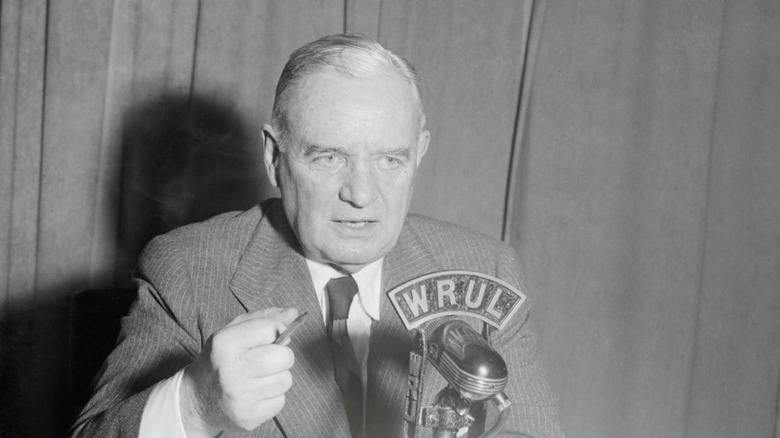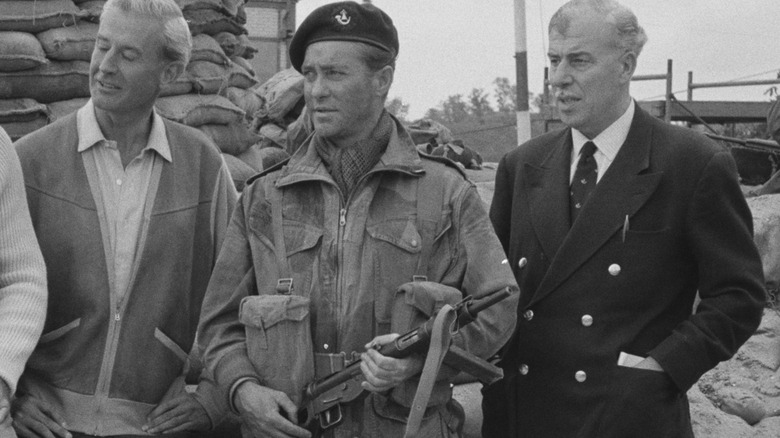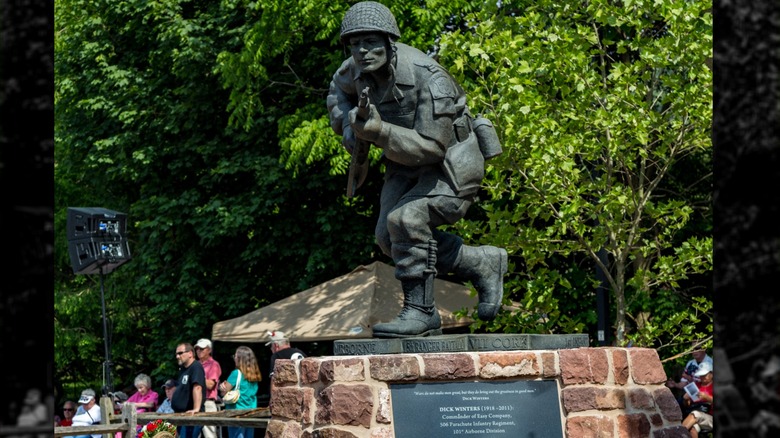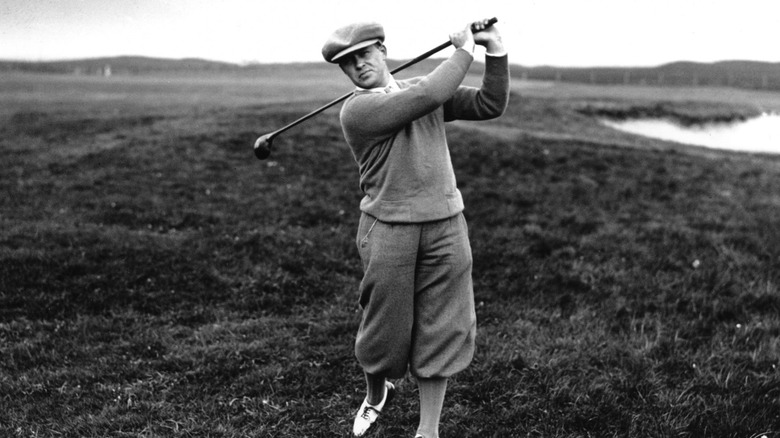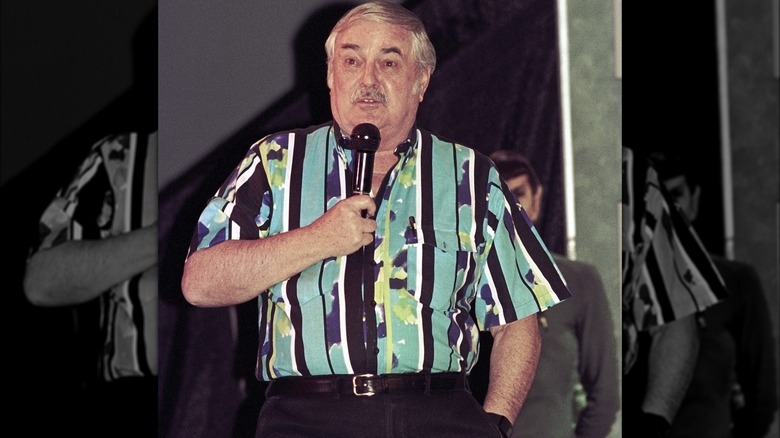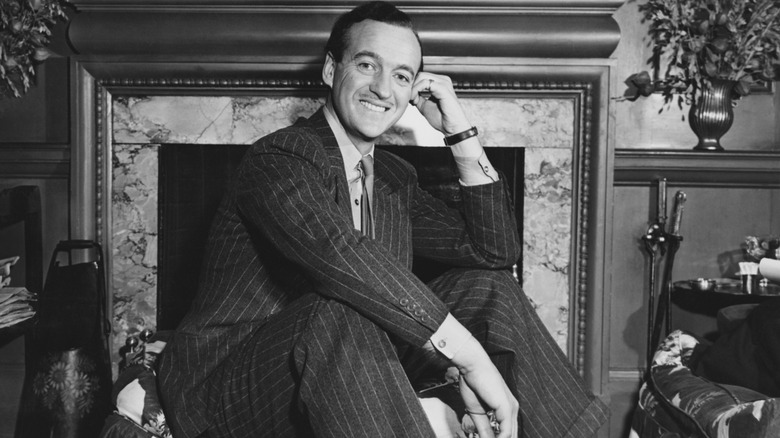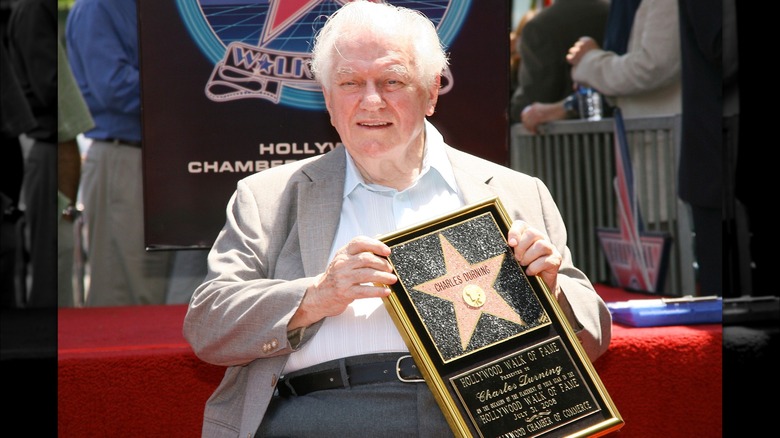12 Notable Figures Who Served On D-Day
On June 6, 1944, the Allied forces of World War II embarked on one of the most consequential and important attacks of the war: D-Day. On D-Day, a combined force of more than 156,000 troops from the United States, Britain, Canada, and several other countries, invaded the French beaches at Normandy. The Normandy Attacks, also known as Operation Neptune, were part of the larger Operation Overlord, which called for the eviction of the Nazis from France.
At Normandy, the Allies used an incredible 11,509 aircraft and 6,939 naval vessels to assault the Germans, and it was one of the most successful invasions in history. In addition to the 132,715 troops that attacked the beaches, there were also 23,400 airborne troops who landed behind enemy lines to provide support from the rear. Within a week, the Allies had secured the five different beachheads at Normandy, and just a few months later the French capital of Paris was liberated.
While the majority of the combatants at D-Day were just ordinary soldiers who went back to being average citizens after the war ended, there were also several famous people who fought right alongside them. This included famous actors and politicians, sports heroes of the day, and those who had Hollywood in their future. Looking back, these are some of the most notable figures who served on D-Day.
Dwight D. Eisenhower
Of all the veterans who participated in the fighting on D-Day, future President Dwight D. Eisenhower was probably the most famous. At the time of D-Day on June 6, 1944, Eisenhower was serving as the Supreme Allied Commander of the Allied Expeditionary Forces, and he had begun planning for the invasion at Normandy in January 1944. Eisenhower had already successfully commanded the Allied invasions of North Africa and Sicily in the years prior to D-Day, making him the perfect man for the job.
The landings were originally scheduled to happen on June 5, but at the last minute, Eisenhower postponed the attack until the following day due to poor weather. Just prior to the operation's commencement, to help increase the morale of his troops, Eisenhower distributed his now-famous "Order of the Day." The "Order of the Day" called the invasion a "Great Crusade" that would "bring about the destruction of the German war machine." It also warned that the Allies would face stiff German defenses, but that Eisenhower nevertheless had "full confidence" in their ability to win.
As the Allied forces were officially launching the D-Day invasion, Eisenhower was in Portsmouth, England at the Allied headquarters eagerly awaiting news from the front. Upon hearing about the tough going at Omaha Beach, Eisenhower authorized bombing raids to neutralize the German forces, which they successfully did. Eisenhower reached Normandy on June 7, speaking with commanders on warships near Omaha Beach, and he quickly began disseminating orders.
Yogi Berra
Before baseball Hall of Famer Yogi Berra was crushing baseballs and winning World Series and MVPs for the New York Yankees, he was fighting the Nazis at Normandy. Berra was just 18 when he joined the U.S. Navy, and at the time he was playing for a Yankee minor league team in Virginia (according to his autobiography "Yogi:" It Ain't Over"). However, he quickly was sent out to boot camp in Little Creek, and soon he found himself training for the attack on D-Day.
When the day of the invasion came around, Berra was serving as a machine gunner on board a rocket boat. For the weeks leading up to D-Day, Berra and his rocket boat crew were stationed off the French coast, and he was part of day-one landings. Berra described the incredible scene as "like the Fourth of July," and he watched in awe as one of the greatest battles in history began to play out before him. Eventually, Berra got close enough to the shore to start firing at the enemy, but unfortunately, the only thing he was certain of hitting was an Allied plane.
Mistaking it for a German plane, Berra and his crewmates shot down an American aircraft flying support for D-Day, though luckily the pilot was able to escape and land safely. Berra escaped D-Day unscathed, and just a few years later he was obliterating fastballs at Yankee Stadium instead of shooting at planes.
J.D. Salinger
When the 4th Infantry Division of the U.S. Army made their assault on Utah Beach on June 6, 1944, they counted among their ranks a relatively unknown 25-year-old writer: J.D. Salinger. Salinger was just beginning his writing career at the time, and was actually authoring short stories while training for the D-Day invasion — including what would become his most famous work, "The Catcher in the Rye." Leading up to the attack, Salinger participated in the now infamous Operation Tiger rehearsal, which resulted in the deaths of nearly 750 Allied soldiers after German torpedo boats attacked them.
Salinger was a member of the Army's Counter Intelligence Corps (CIC), and he was part of either the first or second wave of invaders onto the beaches. Luckily, Utah Beach had light resistance, and Salinger was able to make it ashore with relative ease. However, once he got off the beach the real fighting started, and it was fierce. Salinger and his unit were tasked with liberating the city of Cherbourg, which was critical for the success of the entire invasion of France.
Salinger was attached to the 12th Infantry Regiment, and they suffered severe casualties during the intense fighting — some of the worst of the entire Army during the invasion. As a member of the CIC, Salinger was in charge of organizing the interrogation of the hundreds of German POWs. It wasn't until July that he was finally relieved for a few days, after a job well done.
John Ford
If you've watched any of the incredible footage of the D-Day invasion, you likely have at least one man to thank for it: John Ford. Prior to World War II, Ford had become known as an Oscar-winning director, and he was already a household name by the time he was called up to active duty in September 1941. Ford was put in the Field Photographic unit that was part of the larger Office of Strategic Services (OSS), the U.S.' foremost counter-intelligence agency at the time.
After successfully serving in the China-Burma-India theater in 1943 shooting footage for OSS propaganda films, Ford was given a much bigger task in early 1944. The head of the OSS, "Wild" Bill Donovan, put Ford in charge of Allied photography for the entire D-Day invasion, a gargantuan task, but one that Ford was excited to undertake. Ford had already shot the massive Battle of Midway — which had won him another Oscar — and he was there for the D-Day landings at Omaha Beach.
During the initial part of the invasion, Ford was stationed on the U.S.S. Augusta, but he soon was given a ride on a PT boat to get closer. This resulted in Ford actually experiencing combat, as his boat got into a heated machine gun battle with some Germans (at least according to Ford, but many of his biographers think he exaggerated these claims) and he spent five days filming the invasion. After the battle, news agencies used Ford's footage to show the public at home the epic Normandy invasion and inspire patriotism.
Ted Roosevelt Jr.
As a member of the famous Roosevelt family, Theodore "Ted" Roosevelt Jr. had one of the most outsized reputations of any of the men storming the beaches on D-Day. The son of former president Theodore Roosevelt and the cousin of the current President Franklin D. Roosevelt, it was hard for Ted Roosevelt to escape attention. However, far from resting on his laurels or the prestige of his family name, Ted Roosevelt was a soldier through and through, and his conduct on D-Day was nothing short of exemplary.
Ted Roosevelt was a veteran of the First World War as well as numerous campaigns of the Second World War, and he actually requested to be among the first troops to hit the beaches, showing incredible leadership and courage. Serving as a brigadier general, Ted Roosevelt was the highest-ranking military figure to participate in the initial landings, and his gallantry and bravery earned him widespread accolades from his men. He helped organize and lead the men once they reached the beaches, and his strong and confident candor helped him inspire the troops as he directed them.
For his efforts, Ted Roosevelt earned the Congressional Medal of Honor. Unfortunately, he would not live to see the end of the campaign, and he died from a heart attack just over a month later on July 12, 1944.
William 'Wild Bill' Donovan
William "Wild Bill" Donovan was one of the most distinguished soldiers of the 20th century, and he played an important role in the D-Day attacks during World War II. Prior to the war, Wild Bill had made a name for himself as a lawyer, district attorney for New York, assistant attorney general for the Department of Justice, and a war hero during the First World War, for which he had earned a Congressional Medal of Honor.
When the Second World War broke out, Wild Bill was instrumental in creating the Office of Strategic Services (OSS), a counterintelligence and espionage wing of the U.S. Army. As the head of the OSS, Wild Bill had big plans for D-Day, which largely included getting agents behind enemy lines in France to assist with guerilla warfare and sabotage operations. Though he was under orders to stay in London, Wild Bill instead was able to find passage on the U.S.S. Tuscaloosa, which took part in the opening artillery barrage the morning of the attack. He was then able to make his way ashore onto the beaches, where he soon found himself ducking from enemy fire.
Wild Bill tried to connect with some of the OSS guerillas or French partisans working with them once on the ground but was unable to do so. He returned to England a few days later on June 9, and prepared for the remainder of the war.
Richard Todd
For decades, British actor Richard Todd (above middle) wooed audiences with his vivid portrayals of heroes, including his role as Maj. John Howard in the 1962 war film "The Longest Day." Yet, as it turns out, Todd wasn't just an immensely popular and talented actor, he was also a bonafide war hero. Prior to catching his big break in the movie industry, Todd fought in the Second World War, participating in the D-Day landings at Normandy.
At D-Day, Todd was a paratrooper in the British Army's 7th Parachute Battalion. He was one of the first troops to land behind enemy lines as part of the massive airdrop effort, and he helped the British secure the Pegasus and Ranville Bridges. The bridges had been liberated by Maj. Howard — the same man Todd would later portray in "The Longest Day" — and Todd and his unit were called in to reinforce Howard and his men. For several hours, Todd and his men fought the Germans in close combat, suffering great casualties and a terrifying bombardment of artillery and mortar fire.
In 2004, Todd traveled back to the Normandy battlefield and even found the place where he had landed nearly six decades prior — though this time he landed with his plane instead of jumping out of it.
Dick Winters
When Stephen Ambrose wrote his now-famous war chronicle "Band of Brothers", he brought the horrors and heroism of D-Day to a whole new audience. The resulting HBO series also brought to widespread attention the stories of many American heroes from D-Day, among them Maj. Richard "Dick" Winters. As the commander of Easy Company, 506th Parachute Infantry Regiment, 101st Airborne Division, on D-Day, Winters is one of the most important and significant characters of "Band of Brothers." He has since become somewhat of a folk hero among war buffs for his exceptional leadership and courage.
As a paratrooper, Winters was part of the overnight airborne drops behind German lines, and he was the jumpmaster of plane #67 (via his autobiography "Beyond Band of Brothers"). While they were flying, Germans hit plane #67 with anti-aircraft fire, but Winters was able to escape safely out of the door — though he lost most of his equipment in the descent. According to Ambrose's "Band of Brothers," Winters landed near Sainte-Mère-Église armed only with a bayonet.
He soon started rounding up scattered paratroopers to head towards Ste. Marie-du-Mont, but on the way they met Germans in a small village and had an intense firefight. Winters and his unit managed to take out four massive 105 mm artillery cannons, with Winters killing several Germans — and it still wasn't even noon. For his efforts, Winters was recommended for the Congressional Medal of Honor but ended up getting the Distinguished Service Cross, instead.
Bobby Jones
Among famous golf heroes who participated in the Normandy Landings, you can count Bobby Jones, the only player to ever achieve Golf's mythical Grand Slam. The Grand Slam is when a golfer wins all four of the major golfing tournaments in a calendar year, which Jones did in 1930, and many consider him one of the most influential and significant golfers of all time. Already long retired from golf by the time World War II broke out, Jones joined the U.S. Army Air Force in 1942 just after the Attack on Pearl Harbor.
In 1943, Jones got his first taste of action in the 9th Air Force as an intelligence officer, and he began training under Gen. Dwight D. Eisenhower in early 1944 for the D-Day invasion. Jones' unit went into action at Normandy on June 7, the day after the initial landings, where he and his unit faced enemy fire. After two days on the beaches, Jones soon moved further inland, where his unit interrogated German POWs who were captured during the fighting.
Not too long after participating in the D-Day invasion, Jones, who was a major at Normandy, was promoted to lieutenant colonel and discharged in August 1944. After the war, Jones rejoined the golf world, where he reopened the legendary Peachtree Golf Club in Atlanta, which had been shuttered during the war.
James Doohan
The man most synonymous with the character of Lt. Comm. Montgomery "Scotty" Scott from the "Star Trek" franchise, James Doohan, was also one of the soldiers who participated in the D-Day landings. Doohan started playing Scotty in 1966, but nearly three decades prior he had decided to join the Canadian Army in 1938, and he soon saw action in World War II fighting for the Allies.
On D-Day, Doohan was part of the 3rd Canadian Infantry Division as they assaulted Normandy at Juno Beach. The beach was one of the most contested by the Germans of the five the Allies assaulted, and Doohan unwittingly ran over anti-tank mines — thankfully they didn't go off — on his way up the beach. He killed two German snipers but was otherwise unscathed from the fighting, that is until nightfall. On accident, a fellow Canadian mistook him for a German in the darkness and shot him six times, but Doohan would survive with only the loss of his right middle finger.
During a 1998 interview published in the Minneapolis Star Tribune, Doohan compared his experiences hitting the beaches with the famous opening scene from the film "Saving Private Ryan," which depicted the harsh landings at Omaha Beach that same morning. Doohan was able to recover from his wounds and continue serving in the Canadian armed forces during the war, beginning his acting career a few years later in 1950.
David Niven
Oscar and Golden Globe-winning actor David Niven was another celebrity who fought during D-Day, doing so as a member of the British Army. Niven was already a famous Hollywood actor but also a graduate of a British military school by 1939, and he was actually filming a movie, "Raffles," when he joined the British Army following the German invasion of Poland that September.
While he was fighting in the war he was also acting, and coincidentally as the Allies were storming the beaches on June 6, 1944, his newest movie "The Way Ahead" was being released to audiences in London. While his fans saw him portray a lieutenant onscreen, at Normandy he was a lieutenant colonel and he joined the fighting just days after the initial invasion. While he claimed to have landed under fire at Omaha beach and engaged in much fighting in his autobiography "David Niven: The Moon's A Balloon," other sources reported that he arrived at Normandy via airplane as part of a BBC contingent (via "Niv: The Authorized Biography of David Niven").
In his autobiography, Niven recalled dodging enemy artillery by hiding in his foxhole while fighting at Carentan and being given the Iron Cross by a friend. After D-Day, Niven continued to fight, though he also made frequent trips back to England from the front.
Charles Durning
Battling a severe case of nerves and seasickness, famous actor Charles Durning was one of the 132,715 young men who stormed the beaches at Normandy on June 6, 1944. According to an interview he gave for PBS in 2018 about D-Day, Durning was one of the first three men off his boat when the ramp went down, and he watched in horror as the man in front of him was immediately shot down and killed.
Struggling in the incredibly deep French waters, Durning saw bullets whizzing by him as he made his way to shore. After making it onto the beach, Durning was immediately engulfed in a mass of chaos and confusion, and he saw men literally ripped in half by the German's bullets and artillery. He was horrified by the mass of death and destruction he saw, and he had to shelter behind tanks to make his way up the beach under heavy fire. Days later, he earned a Purple Heart for his actions in a subsequent battle during Normandy.
After the war, Durning became known for his roles in the movies "Tootsie," "The Sting," and "True Confessions," as well as his stage productions of "Cat on a Hot Tin Roof." Still, even decades later, Durning never forgot his service, especially his harrowing fighting at Normandy.
